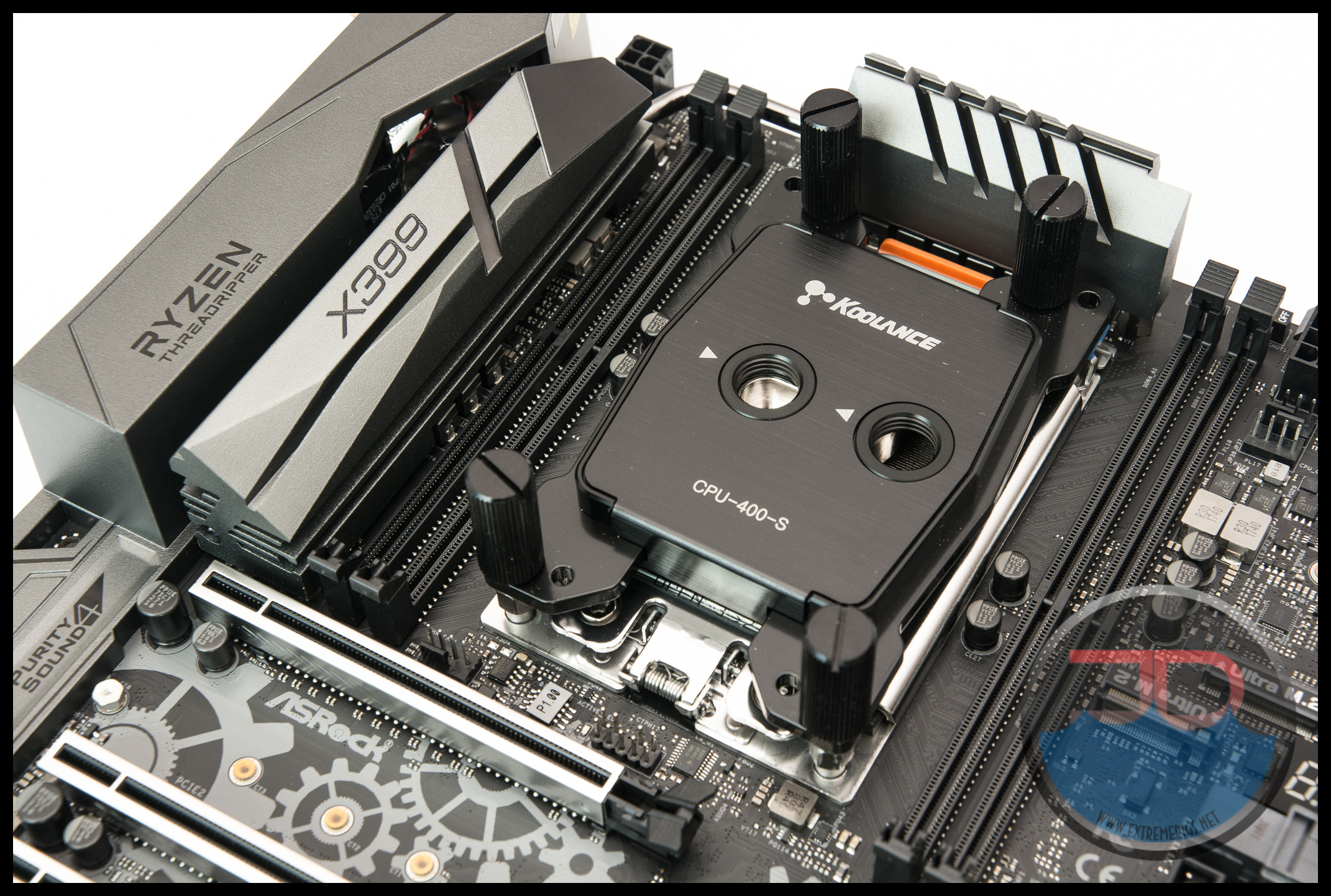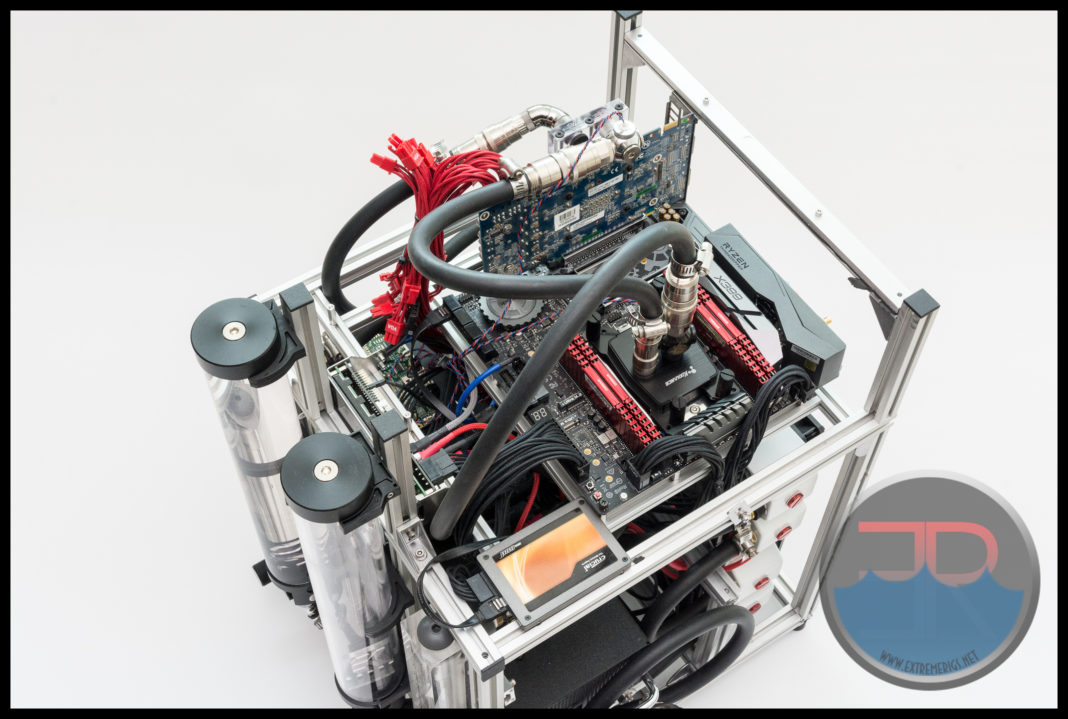Koolance CPU-400-A-S
Koolance were kind enough to send us an early sample of their Threadripper block when we reviewed the CPU-400 for Intel CPUs and shortly thereafter updated the design to improve performance. Today we will only be looking at the new design. We loved the CPU-400 on our 5820K because it provided the best cooling performance that we could recommend. So given that performance, we are expecting good things:
 Packaging is classic Koolance and hasn’t really changed much at all in over 5 years now.
Packaging is classic Koolance and hasn’t really changed much at all in over 5 years now. Nor have the accessories.
Nor have the accessories.
 Koolance’s thumb nuts and stand offs are present as is some basic TIM and a torx head allen key to open the block. Torx head screws are just a bit more resistant to stripping than the standard hex head bolts that a lot of manufacturer’s use. The four metal stickers are for placing a thermal probe between the block and the CPU. We would not recommend this as there is a good chance it will interfere with optimal mounting.
Koolance’s thumb nuts and stand offs are present as is some basic TIM and a torx head allen key to open the block. Torx head screws are just a bit more resistant to stripping than the standard hex head bolts that a lot of manufacturer’s use. The four metal stickers are for placing a thermal probe between the block and the CPU. We would not recommend this as there is a good chance it will interfere with optimal mounting.
The block feels solid but not overly heavy and uses a nickel plated copper base with an acetal top. The acetal top then has a brushed metal top bent over it which gives a classy finish. The branding is on the smaller side which we prefer. The 8 holes in the thick powder coated steel mounting bracket enable the block to be mounted either way around providing a bit more flexibility in your loop order or tube routing. It does however not look as clean as having only four holes.
The 8 holes in the thick powder coated steel mounting bracket enable the block to be mounted either way around providing a bit more flexibility in your loop order or tube routing. It does however not look as clean as having only four holes.
Koolance protects the back with the same plastic sticker from the round CPU-370 block. It does the job though so no complaints there.
 Overall the block looks good – minor niggles include how tall the thumb nuts are and that the black mount doesn’t cover all of the socket. The exposed metal always makes things look busier, and we are always a fan of clean lines.
Overall the block looks good – minor niggles include how tall the thumb nuts are and that the black mount doesn’t cover all of the socket. The exposed metal always makes things look busier, and we are always a fan of clean lines.
 After testing was complete we take the part apart to inspect the internals.
After testing was complete we take the part apart to inspect the internals.
Taking apart the block is simple with the supplied torx head allen key:
Interestingly Koolance use a metal insert. This is part of the reason the block feels so solid and heavy. Most likely metal is used in order to provide a more intense bow than plastic would. However metal will also increase costs, as will the three o-rings used to seal the block and the insert altogether. A jetplate is used in addition to increase local flow through the channels. The channel direction however does look optimized to provide colder coolant to as much die area as possible.
However metal will also increase costs, as will the three o-rings used to seal the block and the insert altogether. A jetplate is used in addition to increase local flow through the channels. The channel direction however does look optimized to provide colder coolant to as much die area as possible.
The cooling area is substantial, and in effect the whole block just looks like a scaled up meaty version of an Intel block.
The area of the base milled for channels is ~50mm wide:
This should provide plenty of cooling potential.













Awesome reviews and love how detailed and simple the articles are, it really helps a lot when coming in choosing different parts which I am currently building, and I am glad I have chosen heatkiller too, athou I am a little worried about the acrylic version overtime while 2990 is in OC status (hot stuff..). fingers crossed.
Comments are closed.